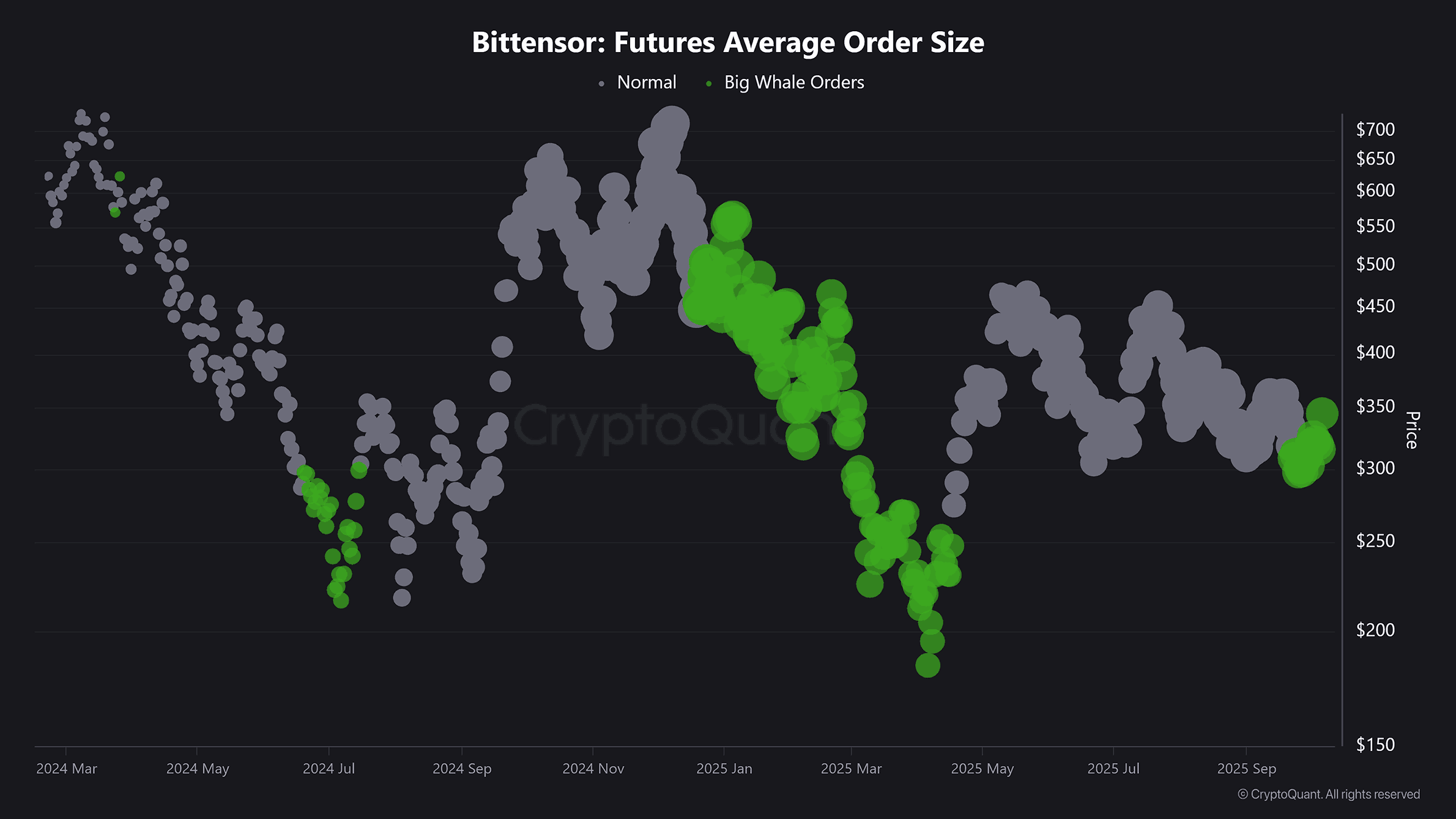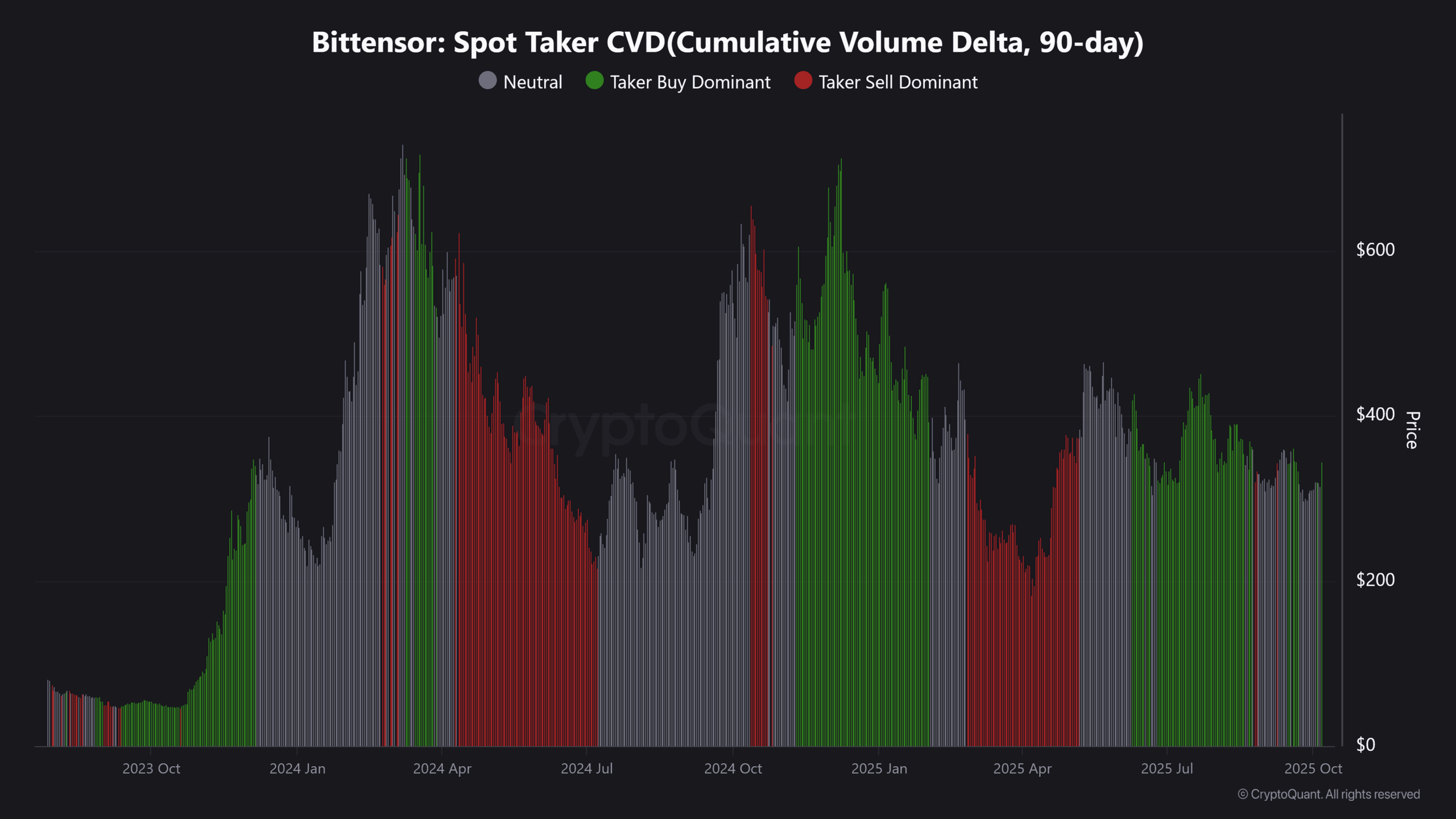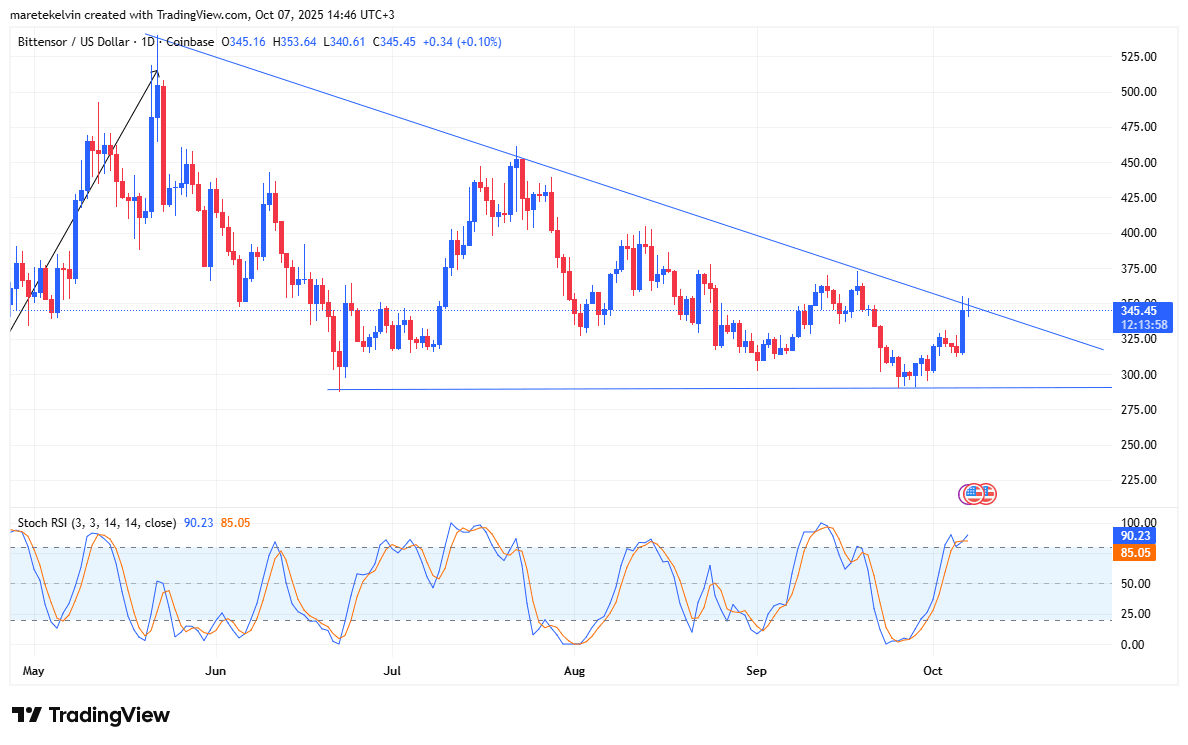Bittensor (TAO) is testing a key resistance near $345 as whales increase Futures average order size and spot CVD shows buyer dominance. A daily close above $345 would signal a potential breakout; failure to clear it likely keeps TAO in consolidation.
-
Whale accumulation in Futures increased average order size, hinting at institutional interest.
-
Spot Cumulative Volume Delta (CVD) shows buyers still dominating short-term flow, suggesting sustained demand.
-
Volume Bubble Map and Stochastic RSI point to cooling momentum and short-term overbought risk near resistance.
Meta description: Bittensor (TAO) testing $345 resistance as whales re-enter futures and spot buyers dominate; watch for daily close above $345 to confirm breakout. Read analysis.
What is driving Bittensor (TAO) price action now?
Bittensor (TAO) price action is being driven by higher Futures average order sizes from large holders and continued spot buying, which pushed TAO to test a key resistance near $345 on October 7. Short-term indicators show cooling momentum, making a confirmed daily close above $345 the key breakout signal.
How are whale flows and futures positioning shaping TAO’s outlook?
CryptoQuant futures Average Order Size data indicated steady additions by large holders across the last two sessions. This clustering of large orders often precedes breakouts as it concentrates liquidity near resistance levels. At the same time, Volume Bubble Map readings pointed to muted volume expansion, implying short-term traders may be taking profits.

Source: CryptoQuant
Why does spot demand matter for a TAO breakout?
Spot Taker Cumulative Volume Delta (CVD) remained net-positive, showing buyers outpaced sellers on the spot books. Strong spot demand underpins sustainable breakouts because futures-only rallies often revert when spot liquidity is absent. In TAO’s case, persistent spot CVD suggests larger participants may be accumulating across exchanges.

Source: CryptoQuant
What technical levels should traders watch?
Most analysts cite $345 as the decisive pivot for TAO. A daily close above $345 would likely convert the descending wedge resistance into support and could trigger follow-through buying. Conversely, rejection at this level may prompt profit-taking back toward the $325 support zone.

Source: CryptoQuant
How do momentum indicators influence near-term risk?
Stochastic RSI readings from TradingView showed overbought conditions on the daily timeframe, suggesting bullish momentum may be pausing near resistance. Overbought signals increase the probability of a short pullback to the $325 demand zone before any sustained advance.

Source: TradingView
Frequently Asked Questions
What confirms a TAO breakout?
A confirmed TAO breakout is most reliably signaled by a daily close above $345 on meaningful spot volume, supported by sustained Futures accumulation and rising spot CVD. Confirmation reduces the odds of a quick reversal.
How should traders manage risk around $345?
Traders should use defined position sizing with stops below the $325 support zone and consider partial profit-taking near resistance. Monitor spot volume and futures order clustering for validation.
Why do whale flows matter for TAO?
Whales concentrate liquidity and can provide the bid pressure needed to overcome resistance; persistent increases in average order size indicate stronger conviction among large holders and raise probability of a sustained move.
Key Takeaways
- Whale accumulation: Futures Average Order Size rose, signaling larger holders are adding positions near resistance.
- Spot demand persists: CVD shows buyers still dominate short-term flow, which supports sustainable moves.
- Watch $345: A daily close above $345 could confirm a breakout; failure to clear it increases downside risk toward $325.
Conclusion
Bittensor (TAO) is at a critical juncture: concentrated whale activity and positive spot CVD favor a bullish outcome, but cooling volume and overbought momentum argue for caution. Traders should watch a daily close above $345 as the primary breakout signal and use $325 as the key defensive level. Continued monitoring of futures order size, spot volume, and momentum indicators will determine whether TAO shifts from consolidation into a renewed uptrend.





